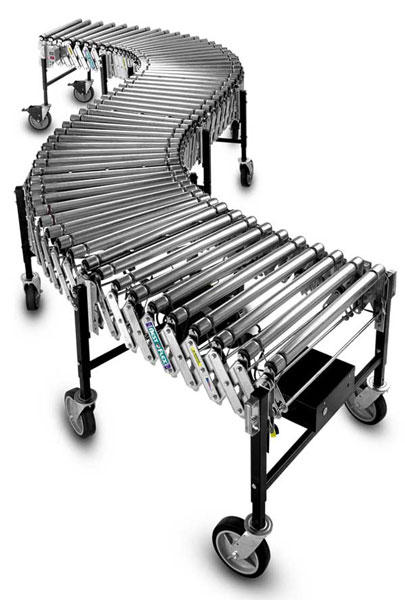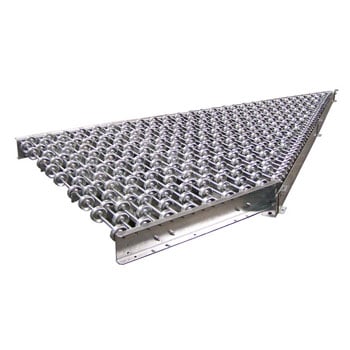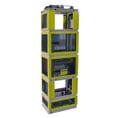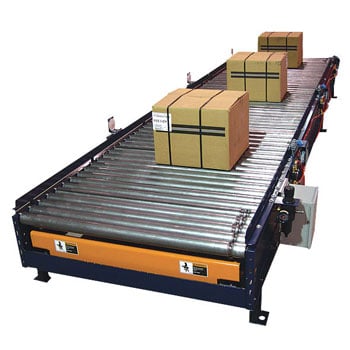About Our Roller Conveyor Systems & Equipment
Transport materials and products to your employees while increasing quality control, productivity, and safety with new or used roller conveyor systems. They eliminate wasted time by more efficiently moving products and inventory to the appropriate location in your assembly and shipping areas.
Browse our steel gravity roller conveyor systems and tables, which include light to heavy-duty options. Powered roller conveyor options are the best choice where gravity rollers aren’t applicable. Skatewheel conveyors are typically used for medium-duty to light-duty applications and require products with a flat base such as totes, boxes, and trays. Aluminum and stainless steel conveyor roller tables work great in some areas, while a ball transfer table is better for moving products in any direction. We can help you find the conveyor system that best fits your space and material handling needs.
Whether you need adjustable height, heavy-duty, wide systems, or a flexible conveyor, you'll find the right unit to keep equipment moving through your warehouse.
Save Costs with Used Roller Conveyors
A great way to save on costs is to buy a used conveyor. Compared to new, buying used can save 30-40% on gravity and flex, and as much as 40-50% for powered units. If you need help choosing material handling equipment that will work for your business, contact our experts at Warehouse1.
FAQs
Q. How do I choose the right conveyor system?
A. This answer depends upon many variables in your application such as transporting product, order fulfillment, distance to be covered, etc. Unfortunately, there is no blanket answer. Every company’s goals and purposes are unique and our in-house design experts can help you make these tough decisions. To provide some examples, MDR conveyors are good options for energy efficiency and quietness (and are expected to replace line shaft conveyors), accumulation conveyors are useful when you need to enable pauses on the line, sortation conveyors can deliver products to multiple lines, and pallet conveyors are durable and can handle loads of heavy pallets. There are many types of conveyors available. Please reach out to us with any questions.
Q. How wide should my system be?
A. The ideal width is based on the maximum width of the product being moved. Assuming the material is evenly balanced, it is generally acceptable to have 2” - 3” overhang on either side of the conveyor.
Q. What are the electrical requirements for a powered conveyor?
A. The majority of these systems operate on 3 phase electricity with a voltage anywhere from 208-230-460-480. It’s also possible to install a frequency drive controller, which allows 120 volt single phase input and 3 phase output.
Q. How do I know what roller diameter to choose for gravity conveyors?
A. A typical 1 3/8” diameter roller has a capacity of 120 lbs. per roller. A 1.9” diameter roller will have an approximate capacity of 250 lbs. per roller. With rollers set on 3” roller centers, there are 4 rollers per foot, so the 1 3/8” rollers would typically carry 480 lbs. per foot. The 1.9” roller is a heavy duty roller that handles approximately 1,040 lbs. per foot. The capacity rating can also vary based on how the section is supported.
Q. Do I want a power belt conveyor or a live roller power conveyor?
A. This answer depends on the application, the type of product being transported, and the purpose. Live roller is ideal for longer distances, accumulation of product, and lighter loads. Belted units are suited for moving boxes or materials with uneven bottom surfaces, heavier weight products, and where straight transportation is required with no pushing or pulling product on to or off; or needing to start and stop sections of the system.












